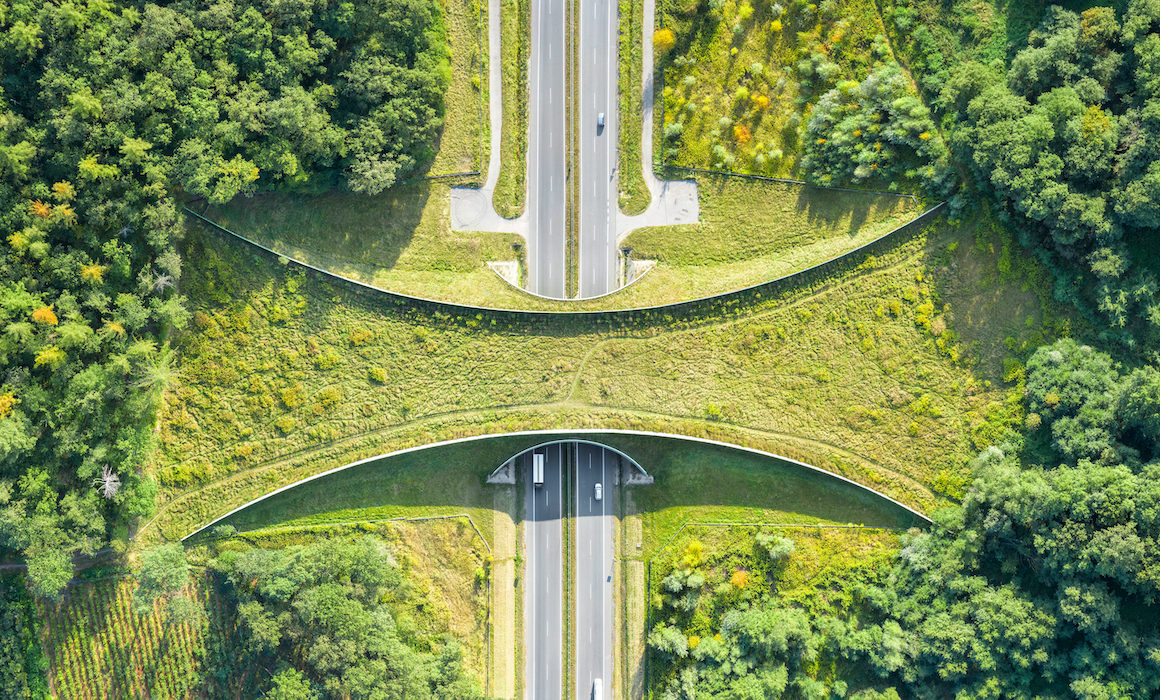A small group of architects in the Human and Biodiversity Research Lab (HUB) at the Technion is shining a spotlight on a growing problem: animal roadkill. Every year, as many as two million vehicles crash into wildlife in the U.S., resulting in about 200 human deaths, more than 26,000 injuries, and countless animal roadkill.
Now, after conducting exhaustive research, scientists at the Technion and the University of Haifa are recommending new ways to construct wildlife crossing structures (WCS) — bridges or tunnels that encourage animals to cross busy highways and roads in the safest and most effective manner.
“The challenge in planning wildlife crossing structures lies in the multitude of factors that need to be taken into account,” said Ph.D. candidate Dror Denneboom, citing elements such as building materials, shapes, and surroundings. “To effectively plan the WCS, one must gain an understanding of how each of these factors affects the potential for use by different species.”
The researchers’ study found that for large animals like deer, wild boar, and jackals, crossings that preserve an open space underneath a freeway overpass are preferable to either confined underpasses such as pipes and tunnels, or bridges that cross above the road. Long, narrow underpasses, on the other hand, were found to be most conducive for small animals, including rodents, hedgehogs, and reptiles, which are often struck down when crossing roads in search of food or a mate.
Building with natural materials such as wood or rock instead of concrete or metal was found to be more animal-friendly, particularly for reptiles and amphibians. Using arched or rounded shapes over box-shaped crossing structures, and preserving surrounding vegetation also proved desirable. Researchers showed that in most cases, fencing the area leading up to the WCS helped funnel the animals to the crossing. And structures used exclusively by wildlife proved more effective than those serving other purposes such as agricultural vehicles.
The Technion’s research is particularly timely. Just as pedestrian crossings and dedicated bicycle lanes have finally arrived, wildlife crossings are having their moment. From just a few WCSs in the U.S. in the 1970s and 1980s, today there are over 1,000, and more are on the drawing board in Florida, Wyoming, Nevada, and other states across the nation. California, for instance, is planning an $87 million crossing for mountain lions that would be the biggest of its kind in the world. And a bipartisan Senate transportation bill is under consideration that includes $350 million for wildlife crossings.
Road development also leads to a disruption of wildlife habitat, cutting off migration corridors and dividing animal groups. “These findings will provide nature conservation authorities in Israel and other countries with a vital scientific basis for planning effective wildlife crossing structures that will allow for the continued existence of numerous species, whose habitats have been fragmented by roads,” said Mr. Denneboom.
Associate Professor Assaf Shwartz, head of the HUB lab in the Faculty of Architecture and Town Planning, said the research is part of a series of studies to better understand how to plan open spaces that will safeguard the natural world around us and allow for the movement of wildlife species between nature reserves.


